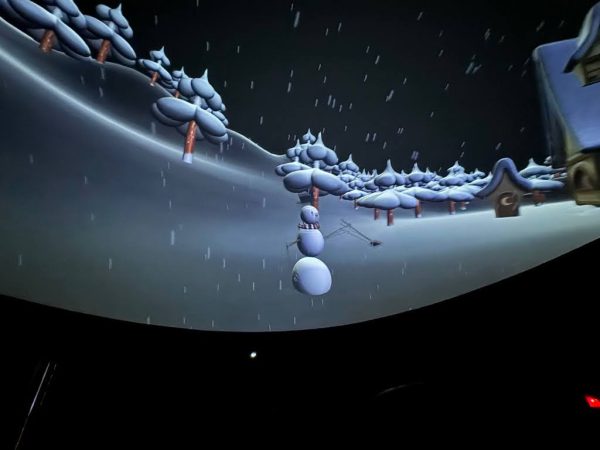Award-Winning Cinematographer Kirsten Johnson Impresses in New Film
Award-winning cinematographer Kirsten Johnson discusses her 25-year long career with both original footage and clips from some of her acclaimed films, like “Pray the Devil Back to Hell,” “Citizenfour” and the recent “Trapped.” The range of her experiences is vast, covering places like New York, Uganda and Afghanistan, as well as subjects like the Bosnian War, abortion and boxing. While we are never given a complete narrative due to the numerous pieces of footage, the emotional impact and depth are still very much visible in her film.
Unlike most films, the viewers feel the presence of Johnson behind the camera, a presence which is often hidden in order to focus on the subjects in front of the camera. However, with “Cameraperson,” the viewers feel both, and as a result they look at the world through her individual perspective. The unedited footage contributes to this, and so we see where she follows, hear her voice and understand her intentions better. One particularly humorous example is when Johnson is shooting a landscape, and her sneezing shakes the camera. Thanks to scenes like this, viewers are able to gain a better sense of who Johnson is.
Specifically, her reactions provide this insight, as does the dynamic between the cameraperson and the subject. Documentaries often capture painful realities that absorb audiences, and we often forget their effects on the people filming them, who directly encounter these stories. While listening to a boy’s account of an incident that gravely injured him and his brother, Johnson cannot help but cry, despite not understanding the language. While filmmakers have a responsibility to share such accounts with the world, Johnson demonstrates the great responsibility to convey these accounts, especially during such poignant scenes. In addition, she highlights the mutual attachment and reminiscing that later develops, as seen with the Bosnian family she gives the completed documentary to.
Johnson does not neglect to show us glimpses into her own personal life as well; her twin children, parents and even her own face are placed in front of the camera. Her mother, who died after suffering from Alzheimer’s Disease, is put into focus around three years after her diagnosis; a powerful imprint is left when one watches her blankly staring into the natural scenery, while the strong wind blows over. To many viewers, these glimpses are what we would most commonly expect and associate with a memoir. However, the emphasis on her documentaries implies that she has been just as shaped by her personal life as by the experiences required by her career. In other words, other people’s stories are just as important to her as her own.
Even for those unfamiliar with Johnson’s films, “Cameraperson”is engaging, emotionally affecting and overall enjoyable.Several times we do not cite the camera lens as a reason to watch a film, but in truth it impacts all the reasons that we do watch. Along with offering a rare and underrated perspective, Johnson does both her career as a cinematographer and the title of the film justice.






